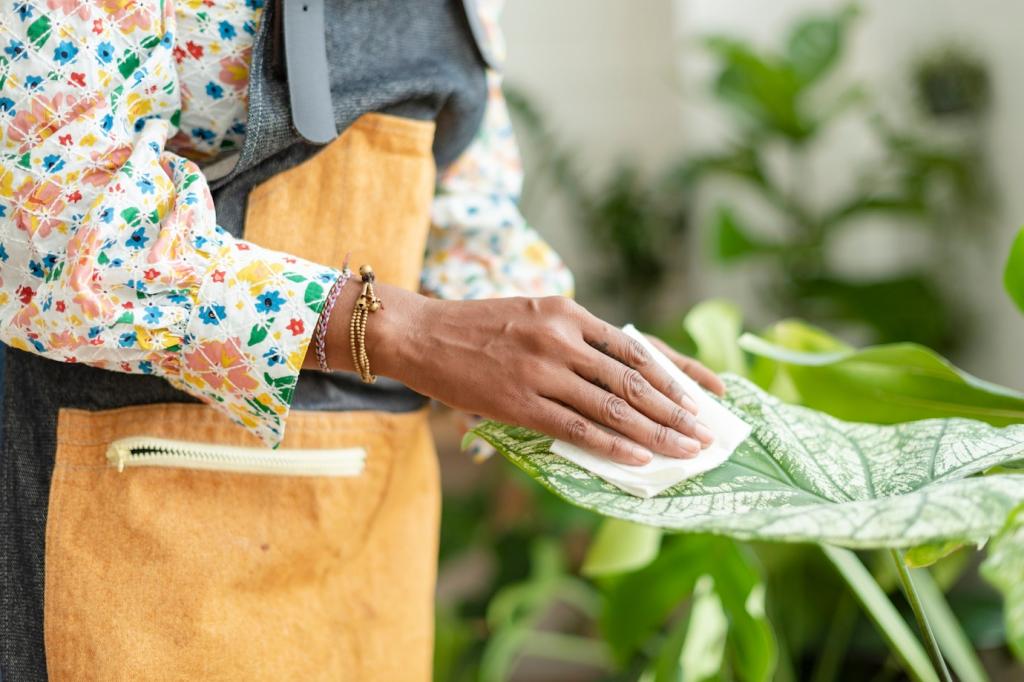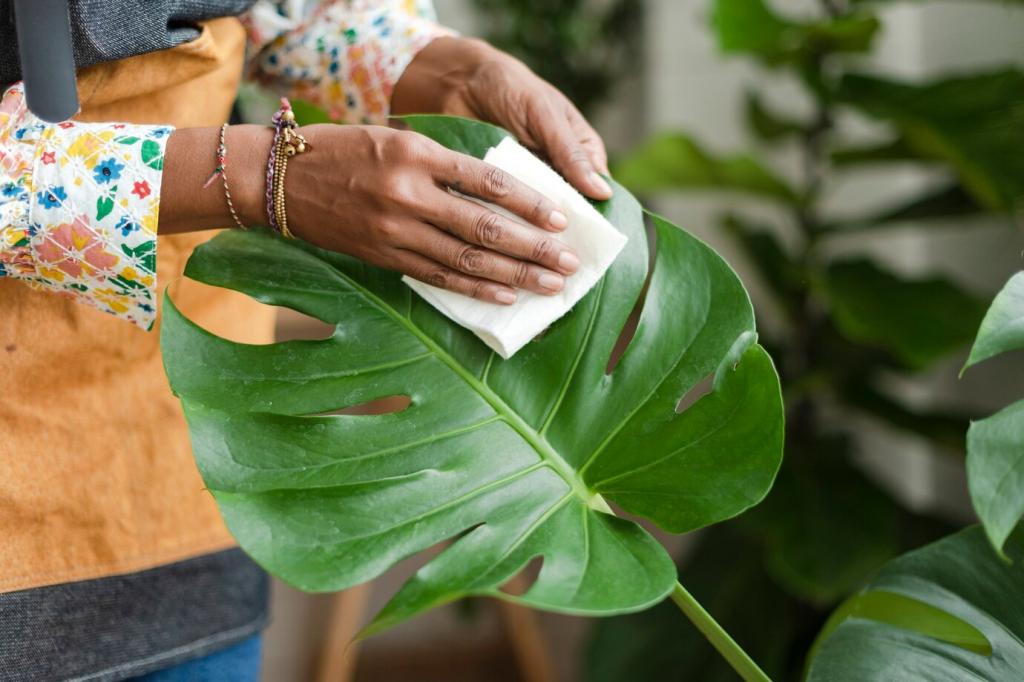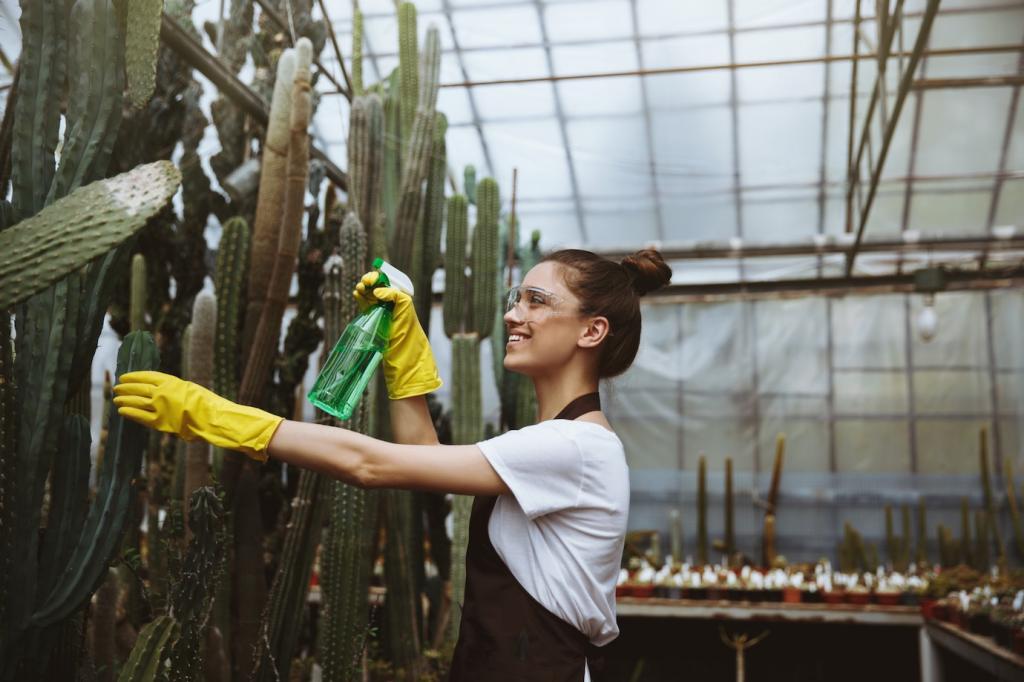Ingredient Deep Dive: What to Use, What to Skip
Look for castile soap or gentle plant-derived surfactants like decyl glucoside and alkyl polyglucosides. They lift everyday soil without stripping finishes. Always wring cloths well, wipe with the grain, and follow with a barely damp rinse cloth, then dry thoroughly to prevent moisture spots.
Ingredient Deep Dive: What to Use, What to Skip
Vinegar can shine glass but may haze shellac and degrade waxed or stone surfaces. Baking soda lifts odors but can scratch glossy coatings. Choose pH-neutral cleaners for most wood and leather, and keep spot treatments contained, tested, and carefully dried to avoid collateral finish damage.









